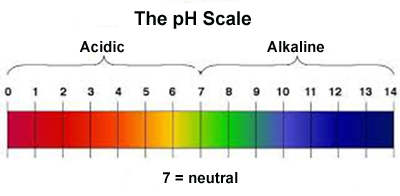|
|
|
Introduction
| In our project, we analyzed the effect of clay particles in the soil on the acidity of the soil, which would allow acidophilic microscopic organisms, like some algae, to thrive. Many algae species are extremophiles because of their ability to survive in the very high temperatures and low pH levels commonly found in many types of soil. These acidophilic microbial algae can be found in soils worldwide and have developed several strategies for keeping a neutral pH level such as a positive membrane potential and a positive charge outside the cytosolic membrane. We believed that the clay particles would trap the acid and algae inside of it. Our research showed that soil with a higher percentage of natural clay would absorb acid faster and deeper down. |
 Map of clay deposits in Maryland and Virginia |
The pH scale measures how acidic or basic a substance is. The pH scale ranges from 0 to 14. A pH of 7 is neutral, a pH less than 7 is acidic, and a pH greater than 7 is basic. With the pH values collected for sites 1 and 2, the soil and plant life should be suffering based on the data collected since the ideal pH range for soil is 6.0 to 6.5. |
 |
|
Algae are organisms containing chlorophyll that range from
microscopic and single-celled to large and multicellular.
They play a critical role in food chains as well as
controlling the supply of oxygen on earth. Algae can be
found where there is light and water for photosynthesis and reproduction. Algae and other microbes in soil allow plants to grow and release chemicals that boost the immune systems of plants. They also relieve stress from plants and can speed up germination. Algae are eaten by microscopic organisms called protists that break down litter on the forest floor into dirt. In turn, algae thrive in areas with a smaller population of protozoa. They also thrive in moist environments so it can use water. The pH of the soil is very important because it affects plant growth, soil bacteria, nutrient leaching, toxic elements, and soil structure. Research suggests that there is a connection between the pH value and the amount of algae in an area. |
 Algae under a microscope |